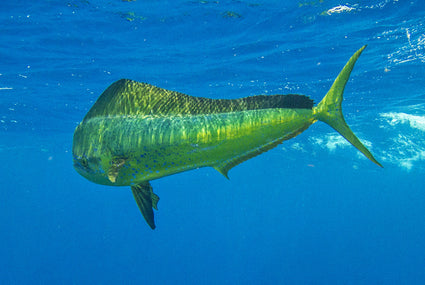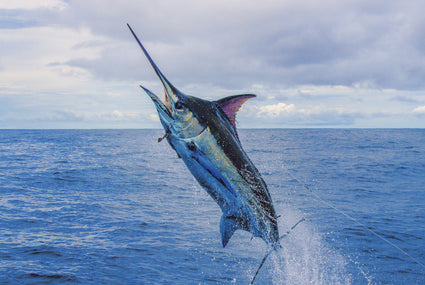Jul 14, 2022
SPECIES PROFILE: Tarpon

Tarpon: The Silver King
Tarpons are a legendary species of gamefish found in the Atlantic and Indo Pacific.
Known for their brute strength, prehistoric looks, and super explosive fighting ability, the mighty Tarpon is considered by many to be one of the greatest gamefish in the world. Simply known as “The Silver King,” anglers from all over the globe travel to Florida’s prolific waters to face off with these real-life sea monsters that will leave even the most experienced fishermen baffled at their sheer power and canny ability to spit the hook during the fight.
Where can you catch Tarpon?
Tarpon inhabit both sides of the Atlantic Ocean. In the western Atlantic tarpon are principally found to populate warmer coastal waters primarily in Florida, the Caribbean, and the Gulf of Mexico. Seasonally, you will find large numbers of tarpon feeding on baitfish and crabs in the shallow waters and bays of South Florida, the Florida Keys, and up into the Gulf of Mexico, and of course Tampa Bay.

A silver king takes flight.
How do you identify a Tarpon?
Both Species of Tarpon are greenish or bluish on top and silver on the sides. The large mouth is turned upwards and the lower jaw contains an elongated, bony plate. This plate is very hard and rarely allows for a solid hookset even when using light wire hooks. On its back the last ray of the dorsal fin is much longer than the others, reaching nearly to the tail. Tarpon have a reputation for attaining astonishing sizes and having impressive armored scales across its body. A tarpon is capable of filling its swim bladder with air, like a primitive lung. This gives it a predatory advantage when oxygen levels in the water are low.
Fun Fact: The scales lining the sides of tarpon can reach up to three inches in diameter.

An XXL sized St. Pete Beach Tarpon.
How big do Tarpon get?
Tarpon are well known by sport fishermen for their astonishing strength and size. Any fish over the 100-pound mark, is considered a “bucket list” trophy of a lifetime for most anglers. The current IGFA world record tarpon weighed in at 286 pounds and was caught in 2003 off the coast of West Africa. Several larger tarpons, over the 300 pound mark, have also been reported but not verified for the world record. Scientists believe that these large female tarpons could be 50-plus years old, which is why so many areas have ruled them as catch and release only. Conserving these giant fish is important to allow future generations of anglers a great challenge and introduction to the world of big game sportfishing.

Close-up of the unique Tarpon mouth.
How do you catch Tarpon?
Tarpon can be caught using live bait, dead bait, or on the fly. The water can be clear in the area most of these fish are caught so bait presentation is absolutely critical to getting bites. The prime live bait for Tarpon fishing in Tampa Bay is Threadfin Shad, Pilchards, Menhaden, Pinfish as well as Pass, Calico, and Blue Crabs. Each bait works best at different times and under different circumstances.
What do Tarpon eat ?
As they progress in juvenile development, especially those developing in freshwater environments, their consumption of insects, fish, crabs, and grass shrimp increases. Adults are strictly carnivorous and feed on midwater prey; they swallow their food whole and hunt nocturnally.

A Tarpon on the prowl.
Conclusion
Fishing for Tarpon on the flats, inshore, and nearshore is the most exhilarating fishing you can ever do. Tampa Bay is a hotspot for the migration and spawning of these majestic monsters. Watching thousands of rollers in front of your boat is a point of excitement, but getting that hook up will put you on a next-level wild ride that has no comparison.
![[Image courtesy of Monterey Bay Aquarium]
A highly-prized gamefish throughout their range, the Bluefin Tuna is a worthy pelagic adversary built for speed, ...](http://pelagicgear.com/cdn/shop/articles/47c7ddc14cd148d3cd266af91ff57aad_425x285_crop_center.jpg?v=1568100611)

